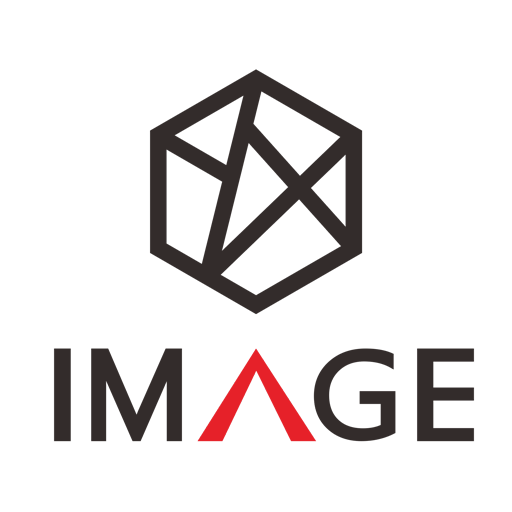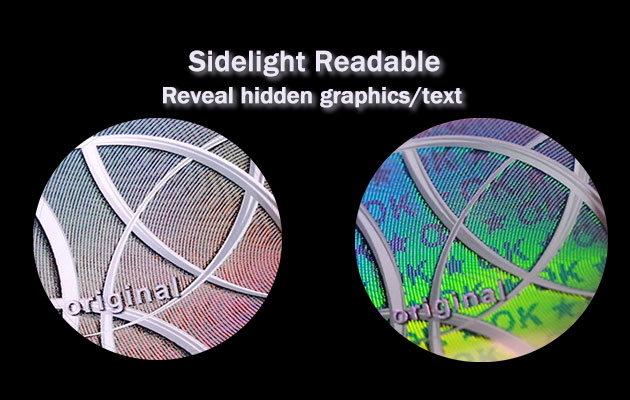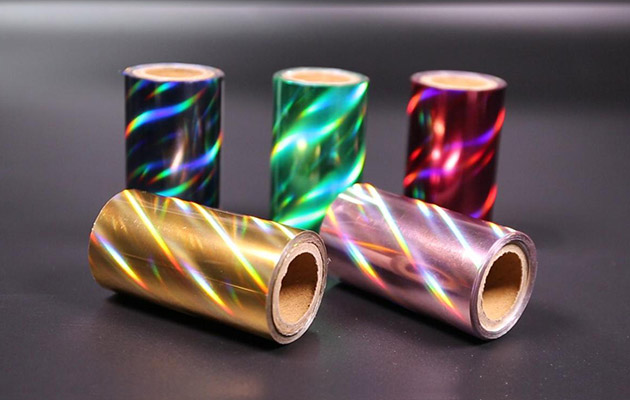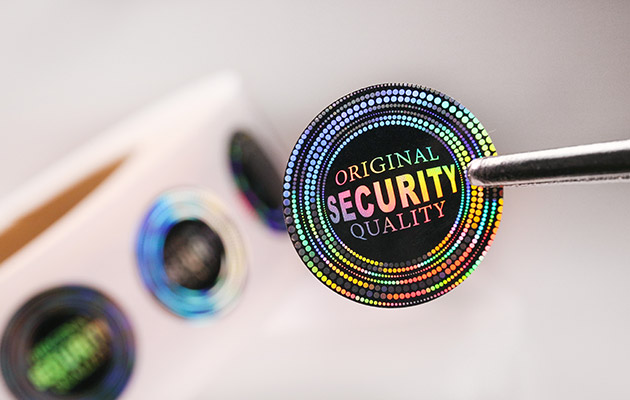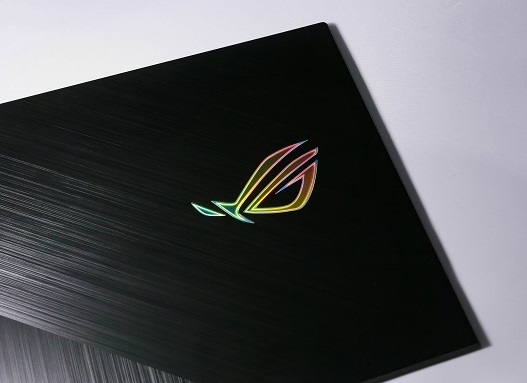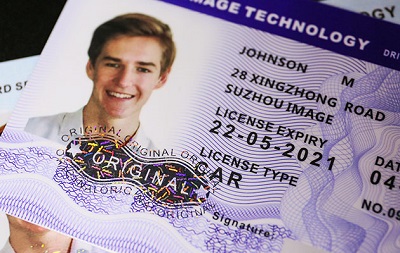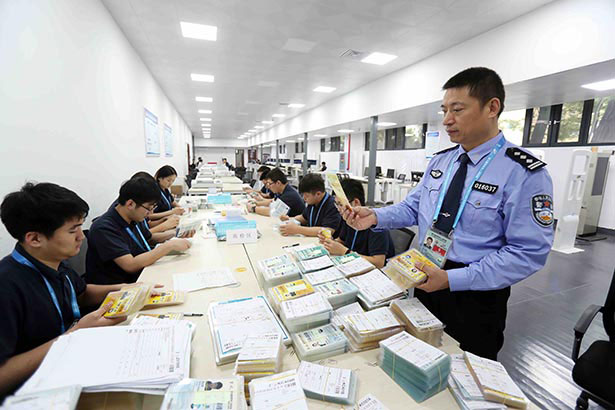With the continuous advancement of science and technology, the technology of counterfeiting and stealing ID cards is also constantly improving, so ensuring the security of ID cards is especially important.
Governments, enterprises, schools, and even medical systems all need complete ID card security solutions to improve the card’s anti-counterfeiting performance.
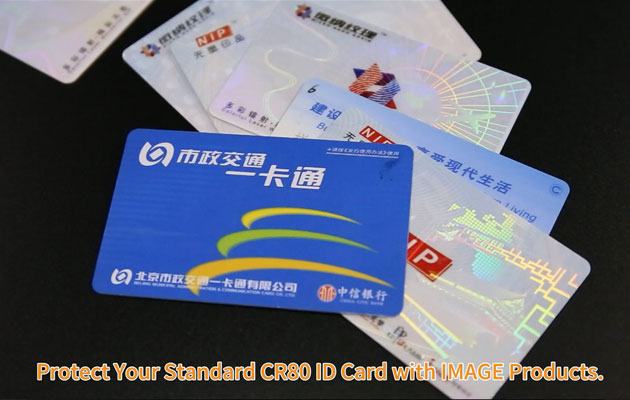
To enhance card security, we can implement comprehensive anti-counterfeiting technology, and effectively combat copying, tampering, and counterfeiting.
ID card anti-counterfeiting features include physical, digital, overt, and covert anti-counterfeiting. Today, we’ll take you to explore these security features integrated into ID cards, designed to provide some help that will benefit your projects.
Holographic Laminate
Holographic lamination is a highly effective ID security feature. Utilizing specialized laminating equipment, a holographic overlay is applied to the surface of the ID card, safeguarding personal information against forgery or tampering and ensuring the card’s security.
Related articles:
How to Make a Hologram Overlay?
Why Use Hologram Laminate Overlay?
Benefits of Using Holograms on ID Cards
In addition to its anti-counterfeiting properties, the holographic overlay film also has good wear resistance. For cards that are used for a long time, there are usually high requirements for durability.
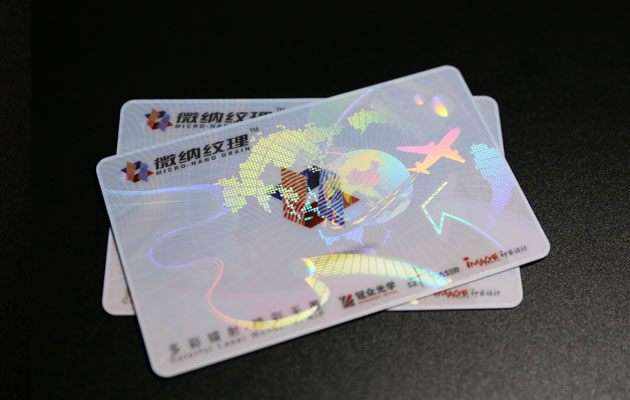
Hologram lamination serves as a robust defense against harsh external conditions, shielding the personal information on ID cards from scratches and wear, thus prolonging the card’s lifespan.
Suzhou Image provides various surface lamination and embedded lamination solutions, suitable for various PC, PVC, and PETG card projects, including ID cards, driver’s licenses, campus cards, bank cards, etc.
Surface overlays include optical transfer film and patch film. Embedded lamination mainly refers to embedded laminated film. The specific selection should be based on the actual requirements of the project.
UV Ink
Ink anti-counterfeiting is a hidden and widely used technology in the field of card anti-counterfeiting. It mainly includes fluorescent ink, light-changing ink, temperature-changing or thermal-sensitive ink, etc. Today we focus on fluorescent ink anti-counterfeiting.
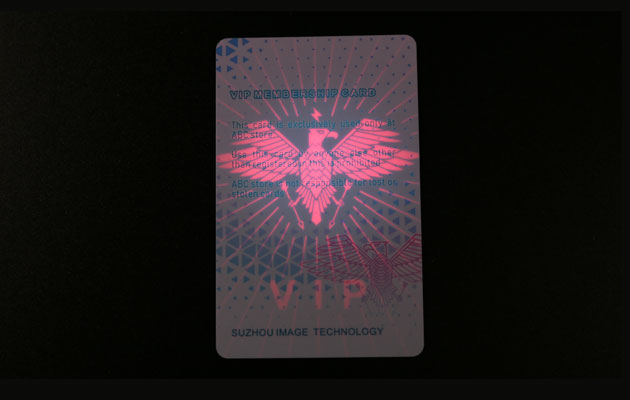
Fluorescent anti-counterfeiting, alternatively termed ultraviolet anti-counterfeiting, is difficult to discover and imitate. Security graphics cannot be identified with the naked eye or touch, and can only be seen with the help of ultraviolet light.
UV fluorescent ink is a relatively mature anti-counterfeiting ink on the market and is widely used in ID cards, official documents, bills, and various brand packaging products.
Guilloche Graphics
Guilloche pattern is a series of complex geometric patterns and curves that can be applied as a background pattern on the card surface.
Although it looks like printed thin lines to the naked eye, the operation requires complex codes, so security ID cards with guilloche patterns are almost impossible to forge.
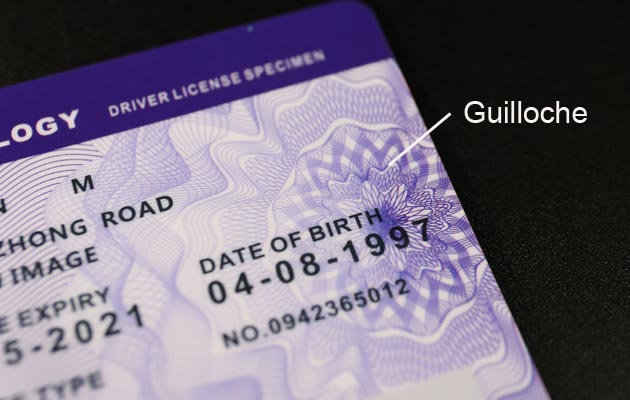
Dynamic optical guilloche, a high-resolution lithography system with professional graphics software can be achieved by a superfine random curve composed of texture, flower, grain, and other ultra-fine lines, which are more secure and aesthetic.
Compared with printed guilloche, it is finer, has more clarity and dynamic changes, and is anti-scan. Dynamic ultra-line anti-counterfeiting technology not only has the same anti-copying function as printed ultra-line but also has a more beautiful visual effect than printed guilloche. It is an important anti-counterfeiting method in the ID card and document security field.
Micro text
Microtext is very small and difficult to read with the naked eye, often requiring a magnifying glass or microscope to view it. Therefore, it is difficult to imitate without the original master and is considered one of the most difficult anti-counterfeiting features.
The application of micro text can be seen on some passports and various ID card projects. If it is applied to cards, special equipment is required to print the micro text on the front or back of the card.
In the holographic anti-counterfeiting industry, microtext technology can also be embedded in the hologram overlaminate patch and become part of the holographic lamination, providing additional hidden anti-counterfeiting protection for the card. The micro text under the magnifying glass can be generic or customized according to project requirements.
Laser engraving
Laser engraving is a visual anti-counterfeiting technology that uses advanced laser equipment to fine-etch the card surface, perfectly presenting the desired pattern and text on the card surface.
This anti-counterfeiting technology is difficult to imitate or tamper with to ensure your ID card is unique. At the same time, it is easy to identify with the naked eye. After the picture is etched on the card surface, it cannot be moved, otherwise, it will leave obvious signs of tampering.
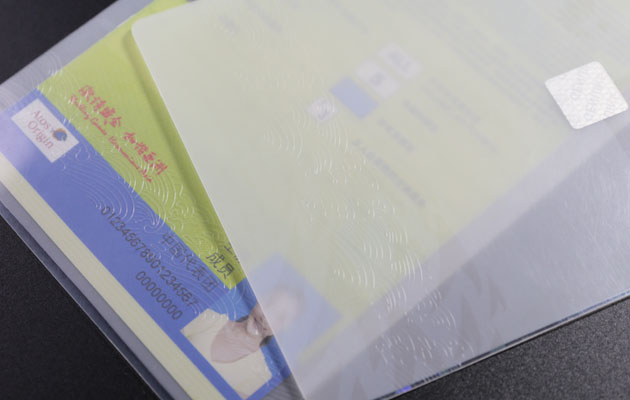
This technology is also commonly used in holographic laminate pouches. Laser engraving technology enhances the authenticity and integrity of the ID card, providing reliable protection against forgery.
Embossing
Embossing is a post-processing process in the production of security ID cards. Using a pre-made engraving mold and applying pressure, the designated numbers on the card’s surface form a three-dimensional effect that protrudes from the card. Pressure is usually applied to the back of the PVC card to cause the surface to swell, commonly known as bumps.
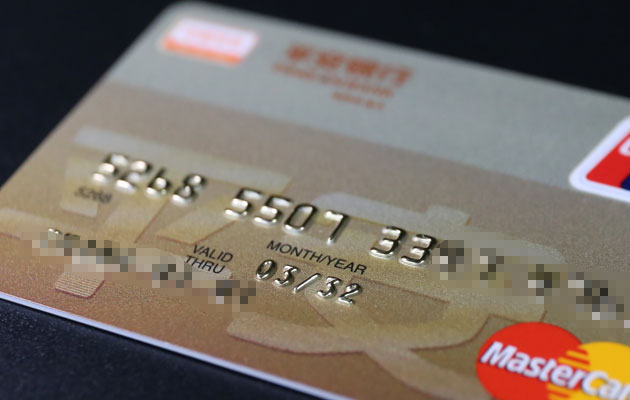
While characters can be embossed anywhere on the card, they are usually embossed within the card number and expiration date portions. This technology is widely used in various banks and credit cards.
Smart Card(Proximity and RFID Card)
In addition to security, many large organizations also want to achieve efficient automated management, that is, incorporating smart cards. Presently, smart cards have wide applications in payment systems, access control, identity verification, and vehicle management. Today, our focus will be on RFID chip cards.
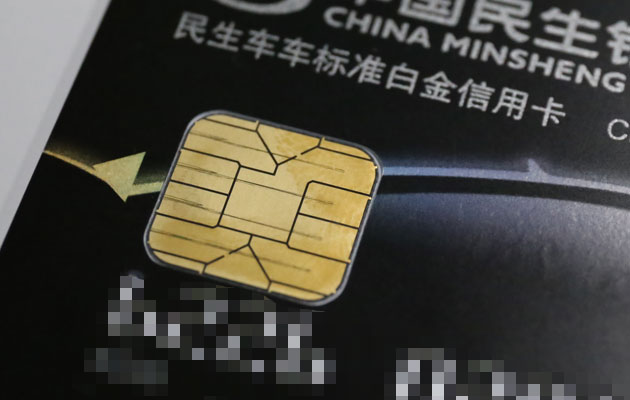
RFID chip cards use advanced radio frequency identification technology and can be quickly identified without contact. RFID has various operating frequencies such as LF (low frequency), HF (high frequency), and UHF (ultra-high frequency). LF is around 125KHz, HF is around 13.56MHz, and UHF is in the range of 860~960MHz.
For RFID systems, the concept of frequency band refers to the frequency range of tag signals sent, received, and read by the reader through the antenna. From the application concept, the working frequency of the radio frequency tag. Frequency is the operating frequency of the radio frequency identification system, which directly determines the application characteristics of all aspects of the system.
Photos
Incorporating users’ photos into various documents and cards is a basic security feature. Not only does it help quickly identify an individual, but it also deters fraudulent activities such as identity theft.
The photos are applied to the cards using color printing technology, which only requires high-quality printing equipment, so they are not 100% impossible to reproduce.
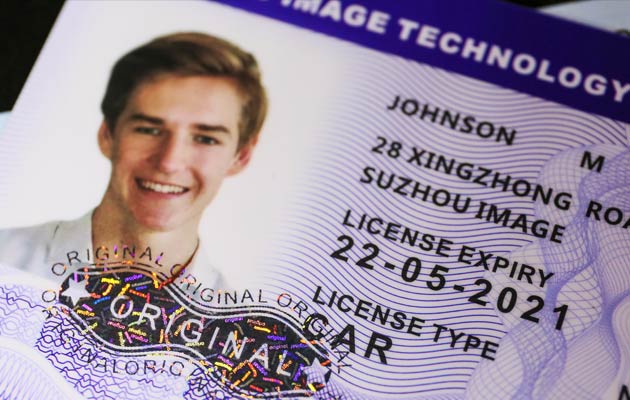
To improve card security, photos are often coupled with data systems, employing technologies such as barcodes, QR codes, or RFID chips. This multi-layered approach makes counterfeiting challenging for fraudsters.
Barcodes
Barcode is an encrypted information encoding technology. It can encode information such as a user ID number, producing a text string that can only be read by a scanner.
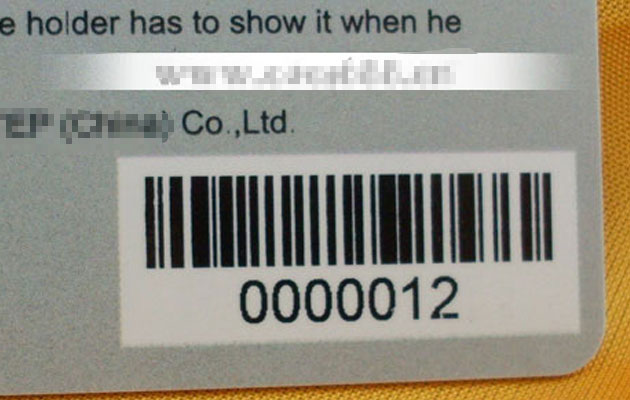
Merely copying the barcode without knowledge of its encoded information will render it unreadable upon scanning, potentially indicating counterfeit activity. Thus, adding a barcode to your card adds extra security to your ID card.
Barcodes are widely used in business, including product management and inventory tracking. In the field of identities, it can be used for personal identity verification, access control data management, etc.
Signature
Similar to user images, signatures are also one of the common card security features. There are special card printer ribbons that can help you add your signature to your ID card. These special ribbons are designed for applications that require user signatures for security and authentication.
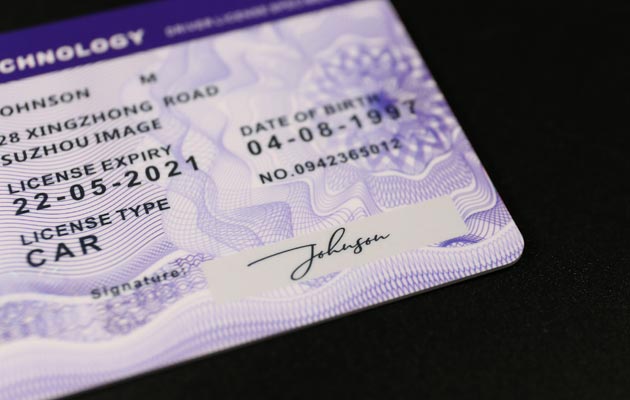
The existence of a signature improves the security and credibility of the card and is an important means of protecting personal information.
Magnetic Stripes
The magnetic stripe, identifiable by its black, gold or silver appearance on the card, serves as a data storage medium. Information is encoded onto the magnetic track of the stripe, with card readers interpreting this data within the magnetic field and converting it into readable information.
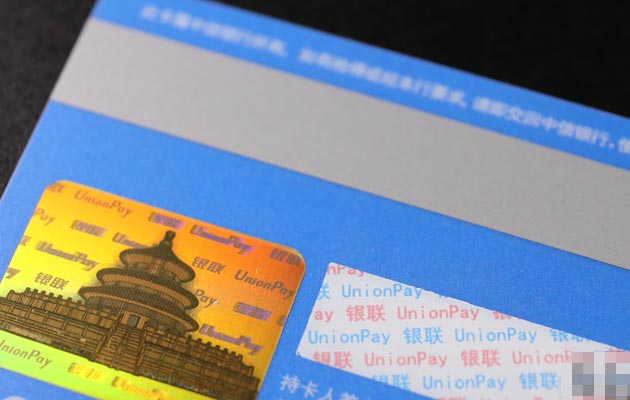
Currently, most magnetic stripes use high coercivity (Hico), but some applications rely on low coercivity (lo-co) cards. However, because magnetic strips are easy to copy, few applications today rely on magnetic strips as a primary means of security.
To enhance card security, comprehensive ID card security features are necessary. This not only safeguards personal identity information and privacy but also maintains social order and security.
Suzhou Image Technology is committed to offering more secure and reliable identification solutions through continuous innovation and the integration of advanced anti-counterfeiting technology.
